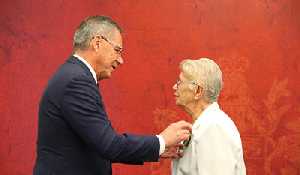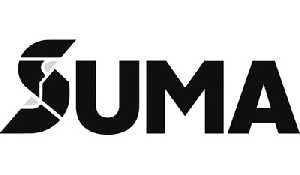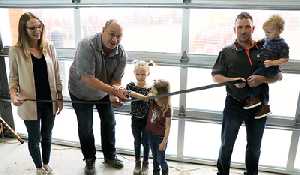School division reports $9.6 mil. surplus
March 4, 2014, 2:00 am
Kevin Weedmark


The Southeast Cornerstone School Division has recorded another surplus.
In its 2012-2013 fiscal year, the school division reported revenues of $106.7 million and spent $97.1 million, for a surplus of $9.6 million on the books for last year.
That’s significantly higher than the $5.2 million budgeted surplus. Revenues for the division were $1.6 million higher than budgeted, and expenses were $2.7 million below budget.
The latest operating surplus brings Southeast Cornerstone’s accumulated surplus to $131 million.
Of that accumulated surplus, $112.5 million is tied up in capital assets. The division has $113 million worth of buildings and other assets, with only $500,000 in debt on those assets, for net capital assets of $112.5 million. The half million dollars of debt consists of loans taken out prior to the establishment of the Southeast Cornerstone School Division.
Despite the healthy surplus on paper, the division’s statement of financial position showed the division was $12.5 million into its line of credit at the end of the fiscal year.
Southeast Cornerstone Manager of Finance Marilyn Yurkiw says the higher surplus this year is in part due to additional capital funding from the province.
“We do see an increase happening to our accumulated surplus,” she said in an interview last week. “It stems from capital projects.
“We get revenue from the ministry when we have capital projects on the go, and that gets recorded as revenue in the year when we receive it. On the opposite side of the statement, on the expense side, those expenses aren’t expensed until the project is complete, and then it gets amortized over the life of the asset.
“So what happens is, we get our revenue in this past year, but the expenses for a capital project may not hit that financial statement for the next 50 years. With buildings, that gets amortized over 50 years, so the funds sit in our accumulated surplus to offset the amortization in future years.”
“We pay the expenses to have a capital project happen, but they don’t get amortized on our operating statement until those periods where amortization is recognized.
“It’s kind of confusing. They sit on our balance sheet as unamortized assets and those kind of offset each other—what we’ve got as unamortized assets and our accumulated surplus.”
The reason for the higher surplus this year? “We did have capital grant revenue that was $2.2 million over our budget and that was because of funds received from partnership agencies for those capital projects,” says Yurkiw. “So yes, we had that cash, we used the cash to pay the expenses of the capital project, so it’s paid out, but it’s not actually recognized as an expense on our operating statement until the project is complete and starts to be amortized.”
She said school divisions must report revenue in a format that combines operating and capital statements.
“If operating and capital were still separate statements, it would be a lot simpler for the reader to understand. The statements are set by the ministry and that’s just the way they are.”
Yurkiw says budgeting for the school division is difficult because revenue for the upcoming fiscal year is a question mark until the provincial government tables its budget each spring.
“That’s a surprise for us every spring,” she said. “Provincial budget day is definitely a busy day for us here because that’s the day we get any indication of what’s happening for our funding levels.
“The division submits three year plans for capital into the ministry but we do not have any prior indication of what may or may not be happening from their level until the provincial announcement is made.
“As a finance manager, I do have all of the other budget managers working on their expense budget. That starts this time of year. Everyone is starting to put their budget together. That gets compiled, and then of course, it’s a bit of a balancing act.
“Once we get the provincial funding announcement, then we have to sit down and look at things and go from there.”



































